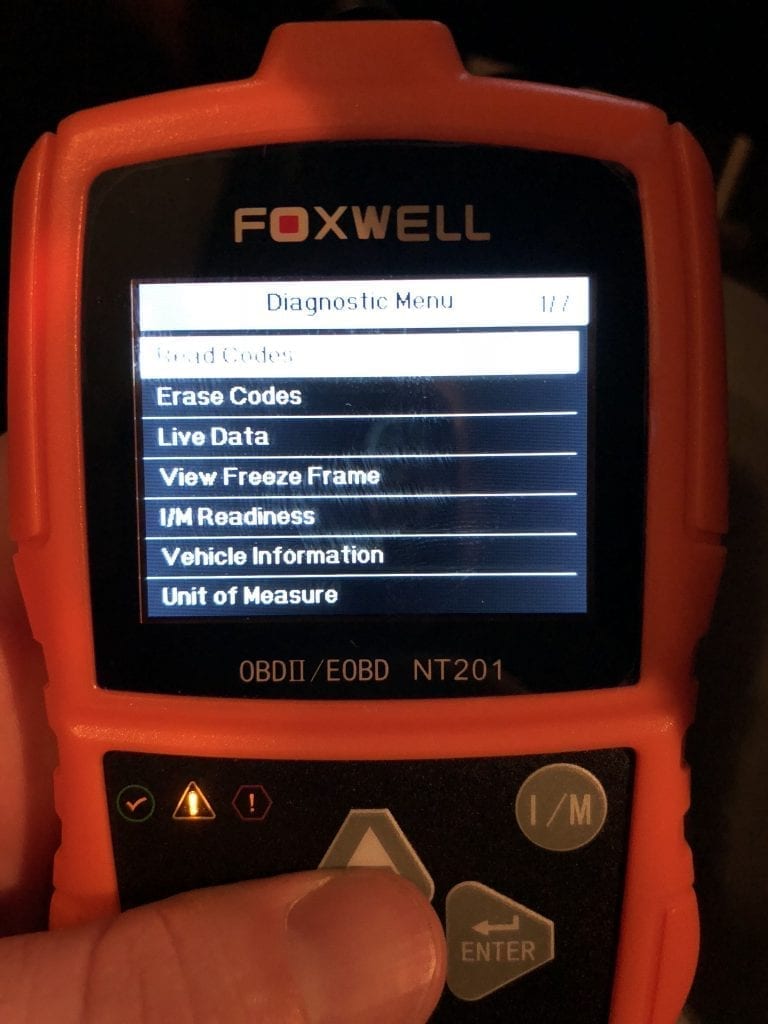Home > Product Installs & Reviews > Product Reviews > Car Accessory Reviews > Foxwell NT201 OBD2 Scanner Overview
The Check Engine has come on in your car and a visit to the garage, dealership or repair center beckons. But will they tell you it's a quick and inexpensive fix or will you be faced with a bill running into hundreds of dollars?
Without an ODB2 scanner you have no way to know. All you can do is follow what the technician or Service Manager recommends. The overwhelming majority are completely honest and trustworthy, but there's a shady few who'll tell you your car needs more work than is really the case. With an OBD2 scanner you'll know what the problem is before stepping through their door.
Better still, if you have some mechanical skills you may be able to fix the problem yourself. If that's the case a good quality scanner could pay for itself in just one repair. Here we'll explain what these scanners are and what they can do. We'll offer some advice on how to pick the best one for your needs, and we'll review one of the most popular scanners on the market, the Foxwell NT201.
Quick links
- OBD2 Scanners and Readers
- Diagnosing problems with your car
- What to look for in a scanner or reader
- The Foxwell NT201 OBD2 Scanner
- About the manufacturer
- Summary
OBD2 Scanners and Readers
Modern cars are equipped with sensors and computers that manage the engine and monitor the exhaust. Occasionally something will go wrong with the engine or exhaust, affecting both gas mileage and emissions. When that happens a computer turns on the Check Engine light to let you know there's a fault.
All vehicles produced since 1996 have come with a system called On-board Diagnostics 2. You'll see this written as either OBD2 or OBDII. This is a way for the computers to output information about whatever fault they've detected.
Below the dashboard on the driver's side there's a bulky electrical socket. This lets a technician plug in a device that reads the message being sent. This device can be either a reader or a scanner. The two terms are used almost interchangeably but there are differences between them.
OBD2 readers
A reader does two things:
- Displays the message the computer is sending, in the form of a trouble code.
- Lets the user clear the trouble code from the computer and turn off the Check Engine light.
OBD2 scanners
A scanner performs the same functions as a reader, plus several more. Functions vary between scanner manufacturers but usually include some or all of these:
- Display freeze frame data (information about what was happening when the fault was detected.)
- Display live data, so you can see what the various sensors are measuring while the engine is running.
- Display data graphically.
- Offer troubleshooting tips.
- I/M (Inspection & Maintenance) Readiness check. (This tells you if the car is ready for emissions testing.)
- Display parameter identification (PID) codes. (Manufacturer-specific messages, often user-selectable.)
- Display vehicle identification number (VIN). (Shows the scanner knows what type of vehicle it is connected to.)
- Display mode 6 values. (This is the criteria the engineers used to establish when a trouble code should be turned on.)
A growing number of code readers incorporate some of these scanner functions in addition to basic code reading. Also, there are some scanners that will help with diagnosing transmission problems. If that's what you intend using it for make sure to buy one with that capability.
Diagnosing problems with your car
You don't need any mechanical or computer skills to use a scanner or reader. (Acting on what it tells you is a different matter though!) All you have to do is plug the cable attached to the device, or sometimes the device itself, into the OBD2 port. With the engine running the scanner will then read and display whatever trouble codes are being sent.
With a basic reader the code is all you'll get. You'll then need to go online to find out what that code means and what to do about it. Once armed with this information you can decide if you want to take the car into a repair shop or if you can do the work yourself. Choose the former and you'll know if they are giving you good information when they tell you what needs doing. (Resist the temptation to clear the trouble codes! The shop will need that information to make their own diagnosis.)
If you're knowledgeable about engine systems a good scanner lets you do a lot more. You can see if your car will pass an annual emissions test or observe how it's running and test the effect of changes. For instance you might want to squeeze out some better gas mileage or try to make a little more horsepower. The bottom line is, a scanner gives you information about how an engine is running. What you do with that information is up to you.
What to look for in a scanner or reader
Every OBD2 reader and scanner is compatible with every vehicle sold since 1996. That means there's no need to worry about whether it will work with yours. Unless you're driving something exotic, it will.
The main factors to consider are:
- Functions needed – just code reading and clearing, or more diagnostic information.
- Length of cable – you may want to read the display while working under the hood.
- Screen/display clarity – you may be working in bright sunlight or at distance from the device.
- Size and weight – it should be portable.
- Impact protection – drops onto concrete garage floors should be anticipated.
- Availability of firmware updates/ability to update the firmware.
In addition to the reader/scanner choice, as discussed above there is a third type to consider. This is what's known as the ELM327 dongle style device. This connects over Bluetooth to an app on a smartphone, tablet or laptop. The benefit is that you can copy data into a spreadsheet or analyze it elsewhere. However, you may question whether this is the best approach when actually working on your car.
You should also consider whether you might want to update the software on your scanner. (Technically, it's “firmware” rather than software.) This would let you interpret manufacturer specific codes from new models and give you revised troubleshooting instructions. Software updating is usually accomplished over a USB link from a computer, although you may find scanners with WiFi capabilities.
The Foxwell NT201 OBD2 Scanner
This engine scan tool performs all the functions listed above under “OBD2 scanners”. It comes in a durable orange housing and has a bright 2.4” color screen. The buttons are large and easily pressed while wearing gloves. There's also a dedicated I/M Readiness button.
The cable that plugs into the OBD2 port is about 2.5′ long. Some users might that find a little short, although it is possible to buy an OBD2 extension cable.
There are no batteries and no need for charging. The scanner draws power through the OBD2 port. There is support for multiple languages.
The scanner comes with a USB cable to update the firmware, and a manual. Windows XP and Windows 7 are supported and there's no limit to how long you can download updates. It's worth noting that some users say they found the manual a little difficult to follow, so take your time with it. Foxwell do have a good FAQ section on their website, so if necessary take a look there.
Like other Foxwell products, the NT201 scanner has a 12 month warranty from Foxwell.
What's In The Box
The NT201 comes with:
- NT201 OBDII/EOBD Code Reader
- NT201 User's Guide
- USB cable
Here's a few pictures from when we opened up the box:
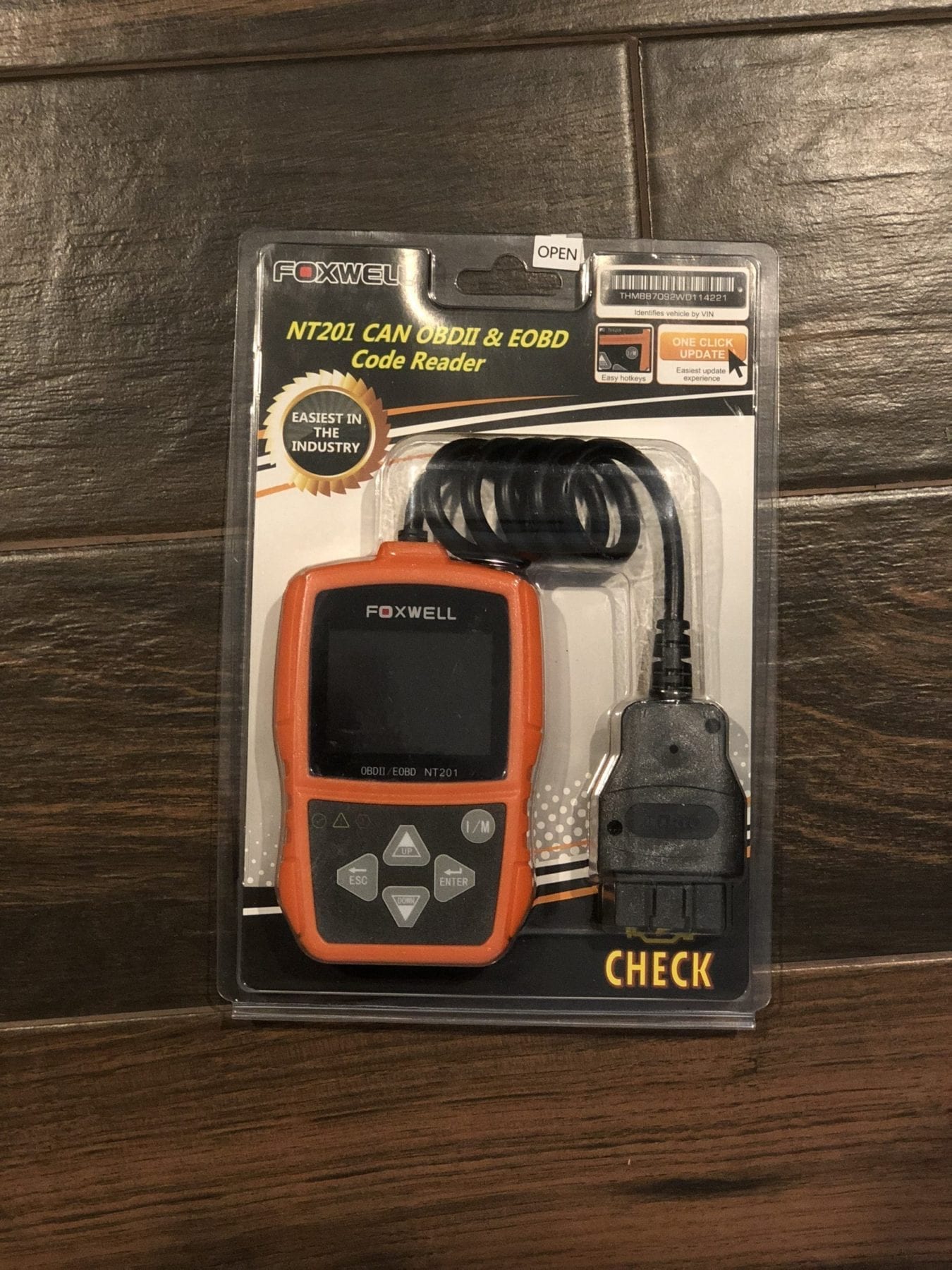
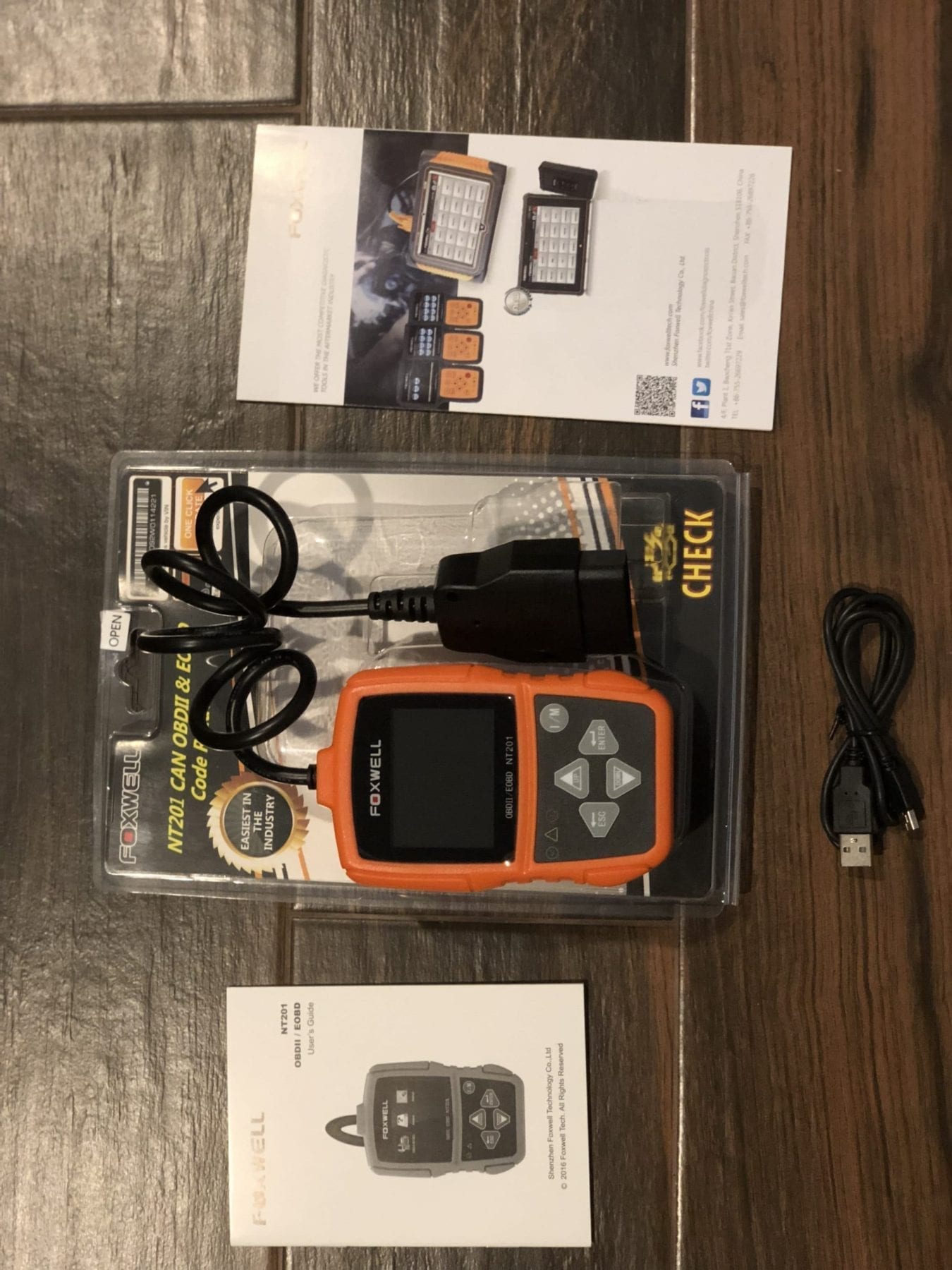
Using the Fowell NT201
Once we opened up the NT201, we went ahead and plugged it in to check it out. For those who don't know how to use an OBD2 scanner, you simply:
Find the OBD2 plug on the driver side of your car. This is usually directly under the dash where your feet are and looks like this:
2. Plug your OBD2 scanner into the plug:
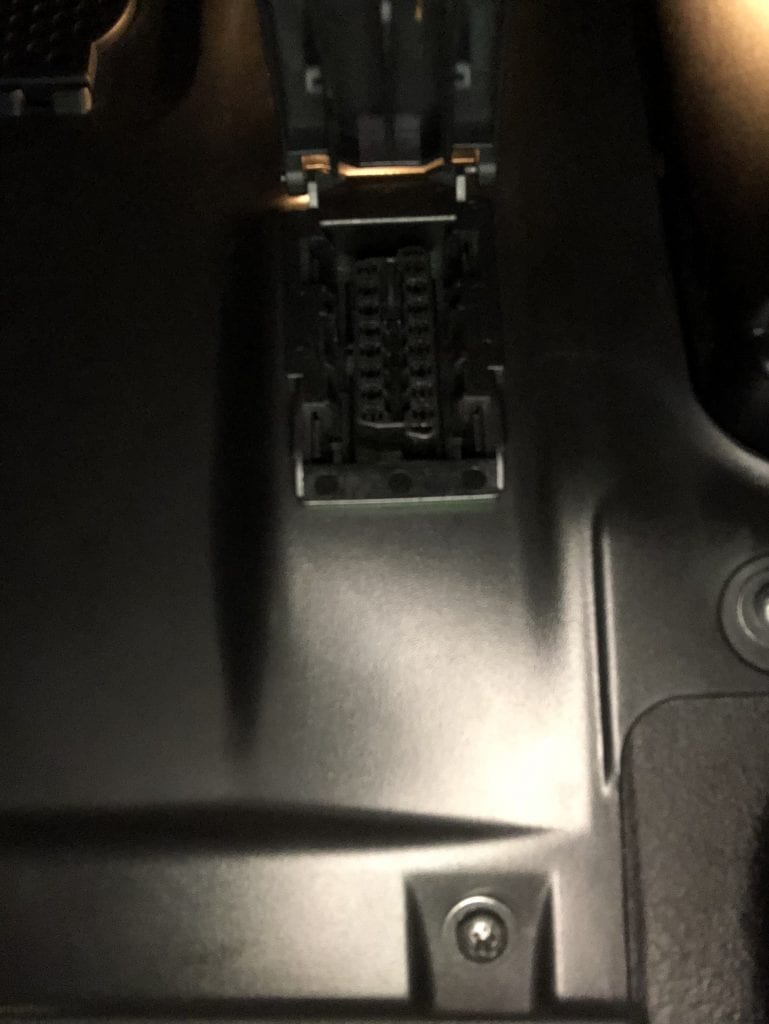
3. Turn your vehicle key into the ignition (without turning the vehicle on)
4. Allow the scanner to connect to the vehicle and click the OBDII/EOBD reader button (some may have this button and others may connect without this step):
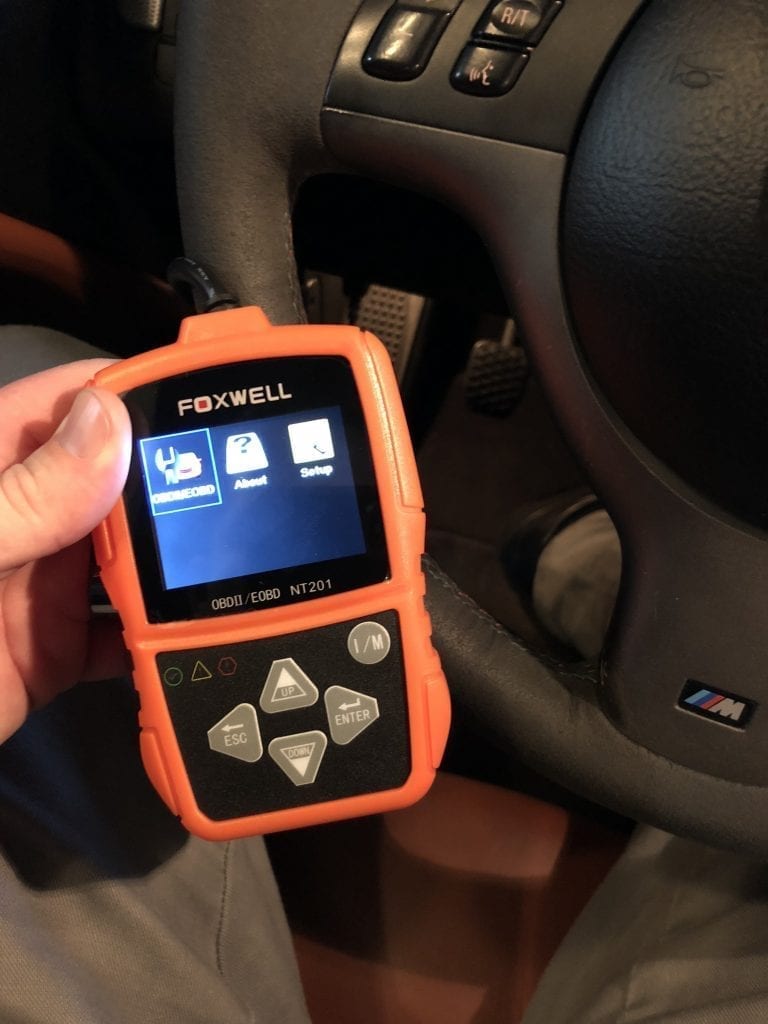
And that's it, you're in. You should see something like this once you connect:
About the manufacturer
Foxwell specialize in diagnostic tools for home mechanics. They invest heavily in R&D and are focused on developing the most capable products for the aftermarket. There are no guarantees but it seems
Product summary
A good code reader or scanner could save you a lot of money in auto repair bills, (and prevent you from being scammed.) The Foxwell NT201 scanner is a well-rounded product with the full set of functions needed to diagnose a wide range of engine problems. The scanner is rugged and easy to use, and supported by a well-established manufacturer. While not the cheapest scanner on the market the ability to download updates means you could be using it for a long time.
Price Comparisons
If you're interested in buying one of the products, check out the comparison below of prices from the leading vendors:
You can also find our list of Best OBD2 Scanners here: https://www.caraudionow.com/best-obd2-scanners-and-readers/

